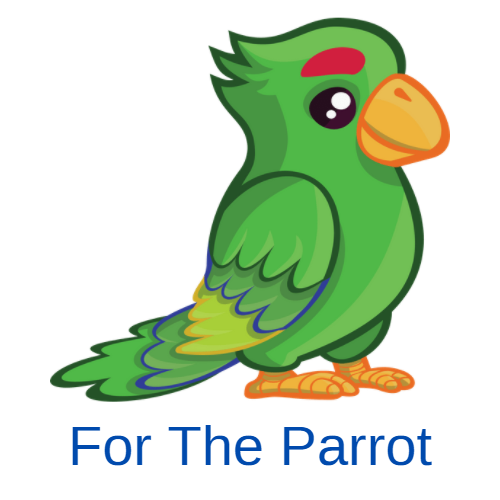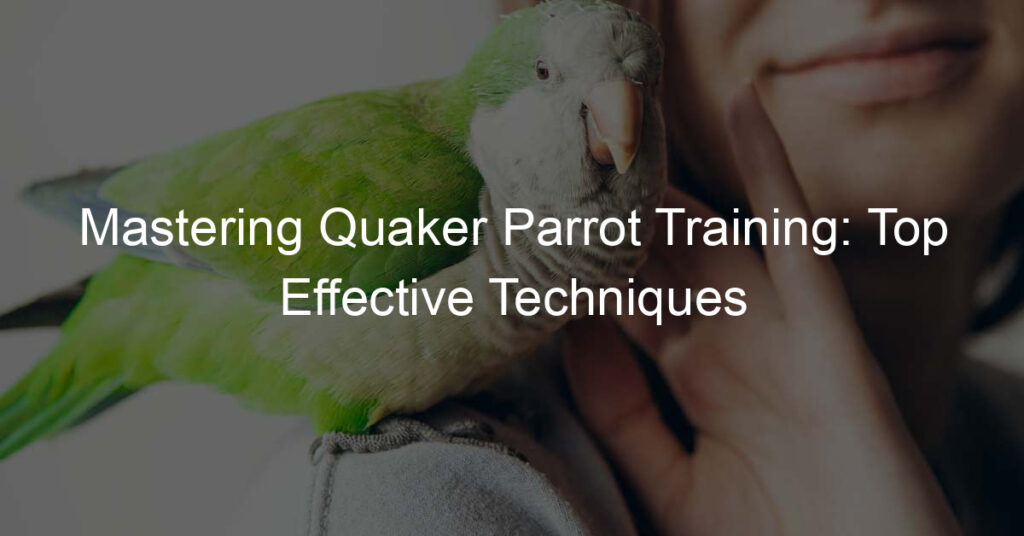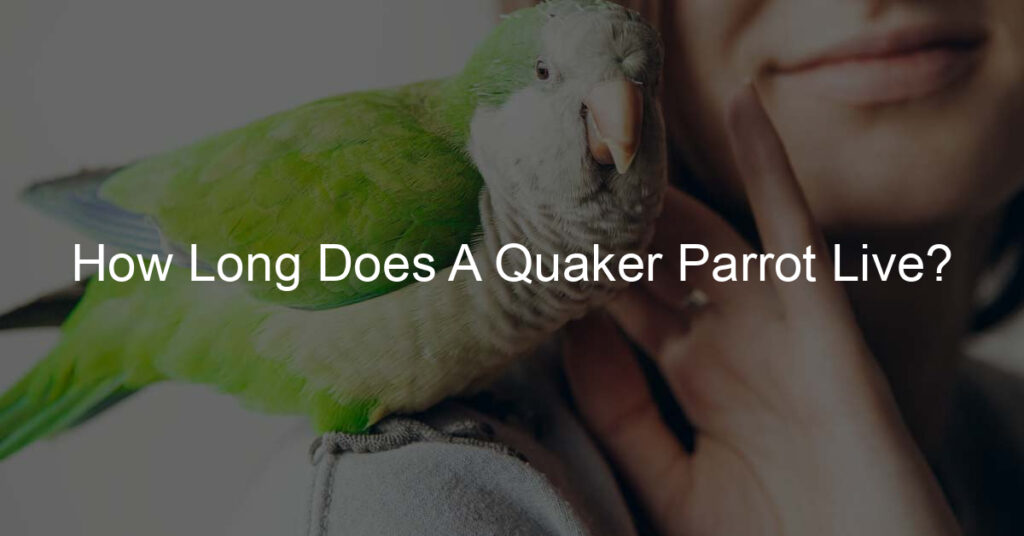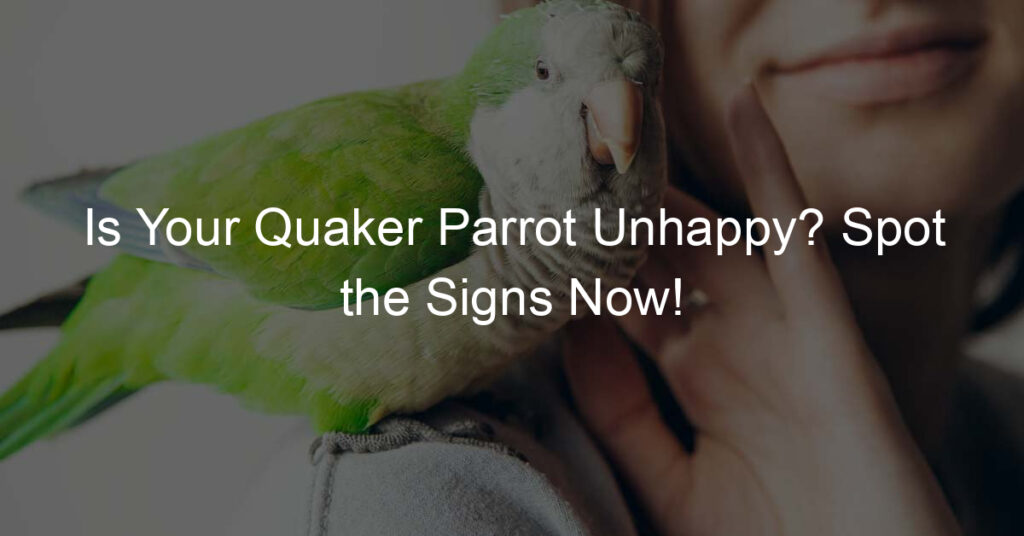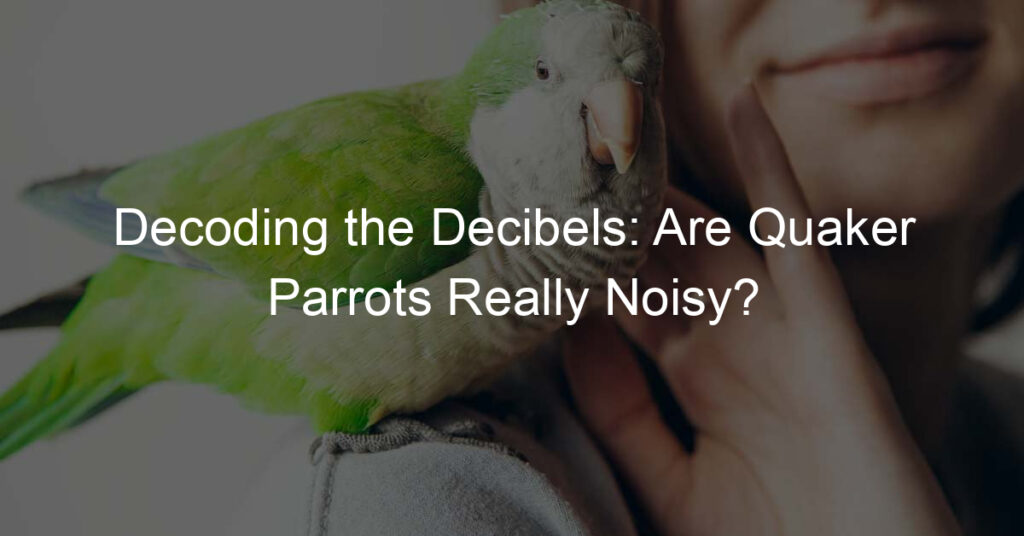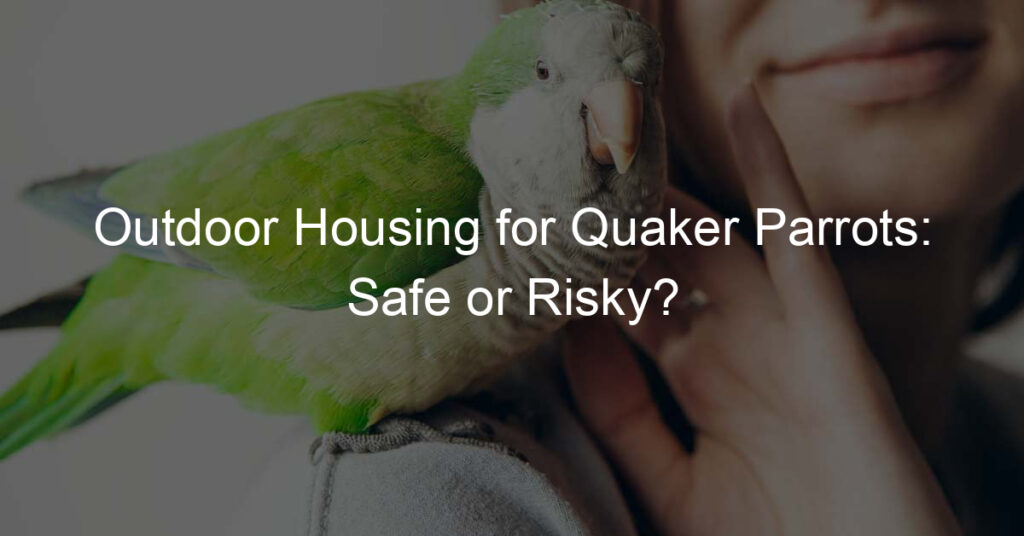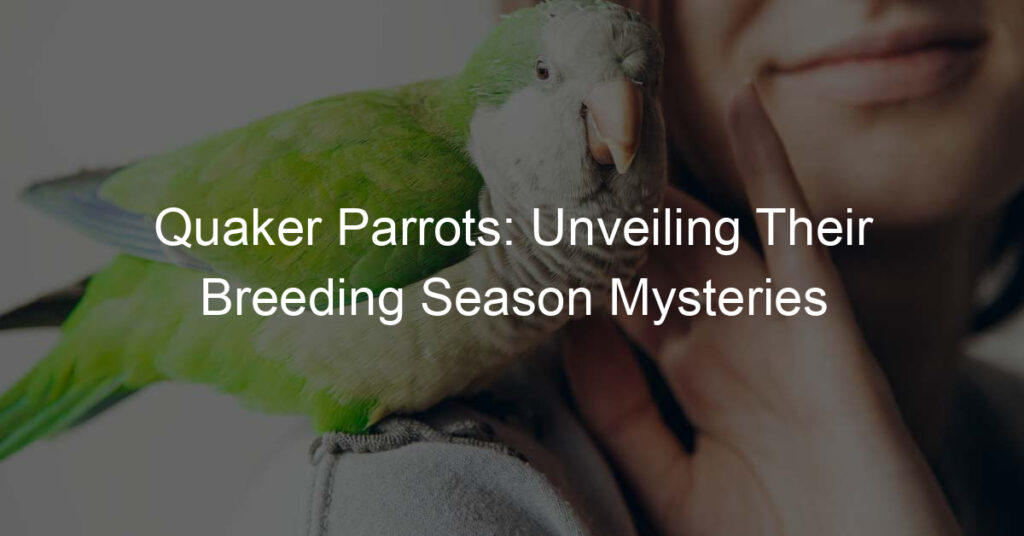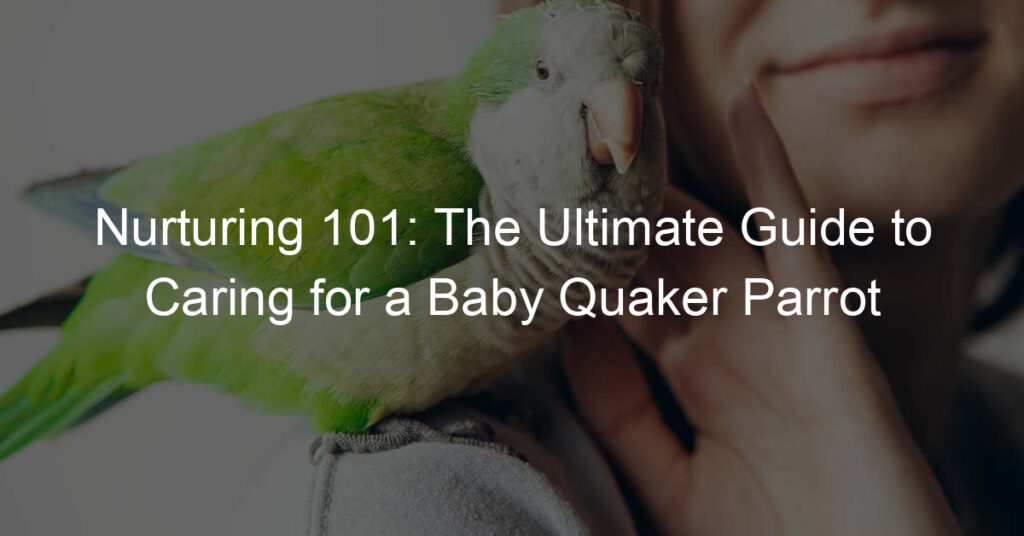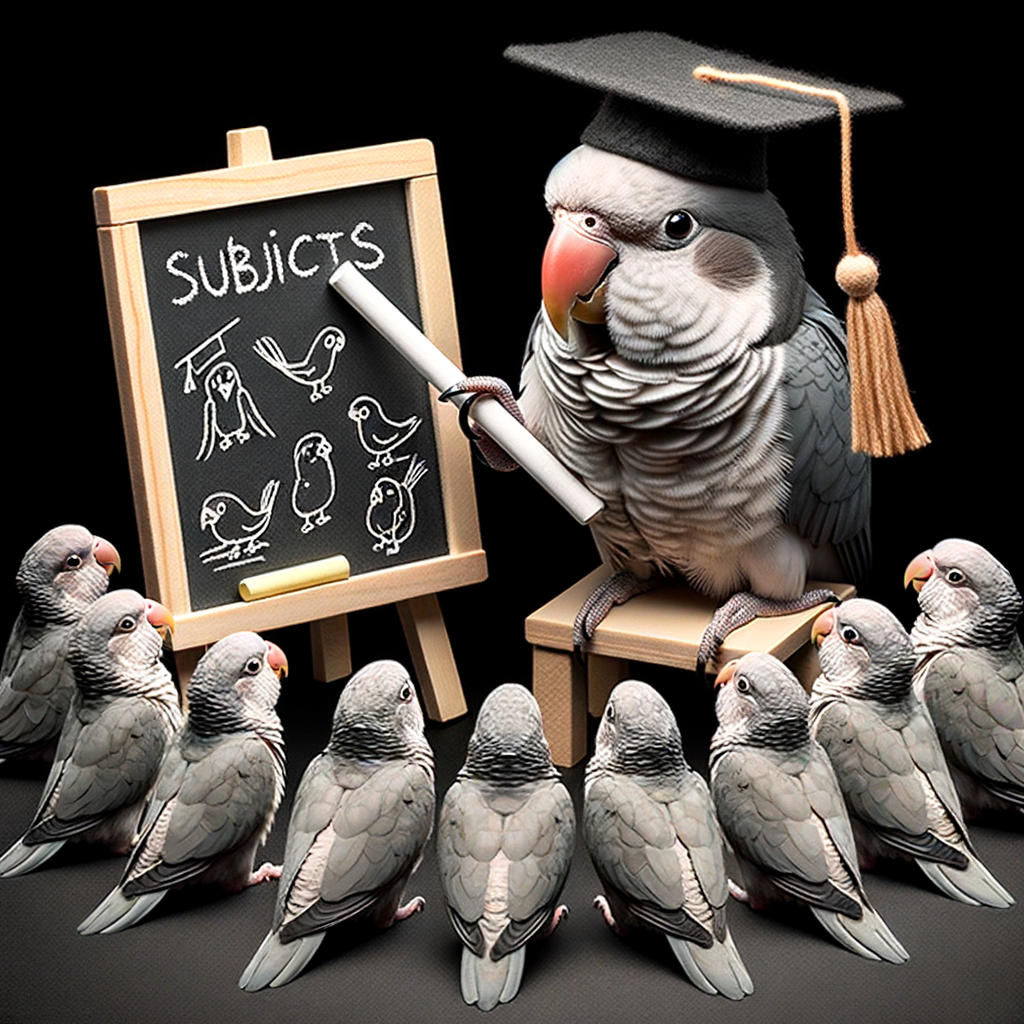
Introduction to Quaker Parrots
Hey there, feathered friend enthusiasts! Buckle up, because we’re about to embark on a squawking good journey into the world of Quaker Parrots. These feathery fellows are as fascinating as they are funny, and we’re here to spill the birdseed on everything you need to know about them!
- Understanding the Quaker Parrot’s Origin and History
- Recognizing the Unique Characteristics of Quaker Parrots
- Understanding Quaker Parrots Behavior
Quaker Parrots, also known as Monk Parakeets, hail from the sunny lands of South America. They got their name ‘Quaker’ because their shaking dance moves reminded people of Quakers. Now, isn’t that a hoot? These birds have been around for centuries, and they’ve been charming bird lovers with their vibrant personalities and stunning green feathers since the get-go.
Quaker Parrots are like the stand-up comedians of the bird world. They’re known for their loud, boisterous voices and their ability to mimic human speech. Not only that, but they’re also pretty easy to spot with their bright green plumage and cool blue wingtips. And let’s not forget their size – they’re a bit larger than your average parakeet, but they’re still small enough to fit comfortably in your living room… or on your shoulder, if you’re going for that pirate look!
Quaker Parrots are social butterflies… or should we say, social birds? They love to hang out in groups, and they’re known for their playful, energetic behavior. But don’t let their fun-loving nature fool you – these birds are also incredibly intelligent. They can learn to mimic a wide range of sounds and they’re known for their problem-solving skills. So, if you’re thinking about getting a Quaker Parrot, be prepared for a pet that’s as smart as it is entertaining!
So, there you have it – a quick introduction to the fabulous world of Quaker Parrots. Stick around, because we’ve got a lot more birdie banter coming your way in the next sections!
Quaker Parrots Care Essentials
Alright, folks! Let’s dive into the world of Quaker Parrots and learn how to keep these feathered friends happy, healthy, and chirping with joy. It’s not rocket science, but it does require a bit of know-how. So, buckle up and let’s get started!
-
Proper Housing for Quaker Parrots
Quaker Parrots are like the royalty of the bird world – they need their own castle! A spacious cage is a must. Think of it like a birdie mansion, complete with multiple perches and toys for entertainment. Remember, a bored parrot is a grumpy parrot, and nobody wants that!
Ensure the cage bars are close enough together so that your parrot can’t stick its head out and get stuck. Also, keep the cage away from drafts and direct sunlight. It’s like placing their castle in the perfect climate!
-
Feeding: What Do Quaker Parrots Eat?
Quaker Parrots aren’t too picky when it comes to food. But don’t let that fool you into feeding them junk! Their diet should be a mix of pellets, fresh fruits, and veggies. Think of it as their personal salad bar. But remember, no avocados or chocolate – they’re toxic for birds. Who knew, right?
And, of course, fresh water is a must. It’s like their favorite soda, but healthier!
-
Healthcare Tips for Quaker Parrots
Just like us, Quaker Parrots need regular check-ups. A yearly visit to an avian vet is a good idea. It’s like taking your car for an oil change, but with feathers!
Keep an eye out for any changes in behavior or appearance. If your parrot starts acting like a grumpy old man or looks a bit under the weather, it’s time for a vet visit. Better safe than sorry!
And there you have it, folks! The basics of Quaker Parrot care. Remember, a happy parrot is a healthy parrot. So, keep these tips in mind and your feathered friend will be singing your praises in no time!
Introduction to Quaker Parrots Training
Hey there, bird-brains! (And we mean that in the most affectionate way possible.) Welcome to the fun and feather-filled world of Quaker Parrots training. If you’ve ever thought, “I wish my parrot would stop squawking and start talking,” then you’re in the right place!
- Importance of Training Quaker Parrots
- Understanding the Quaker Parrot’s Learning Style
First things first, why bother training your Quaker Parrot? Well, apart from the fact that it’s super cool to have a bird that can do tricks, training is actually essential for your parrot’s well-being. It’s like sending them to birdie school, where they learn to behave, communicate, and even play! Plus, it strengthens your bond with your feathered friend. So, it’s a win-win!
Now, let’s get into the nitty-gritty of Quaker Parrot’s learning style. These birds are like the Einsteins of the avian world. They’re quick learners and love to mimic sounds and actions. So, if you’re teaching them a trick, make sure you demonstrate it first. Remember, they’re watching you! (No pressure, right?)
So, buckle up, bird lovers! We’re about to dive into the world of Quaker Parrots training. By the end of this, you’ll be a pro at training your parrot to do everything from saying “hello” to fetching your slippers. (Okay, maybe not the slippers part, but a bird lover can dream, right?)
Effective Techniques for Quaker Parrots Training
Hey there, parrot pals! Ready to learn some top-notch techniques to train your Quaker parrot? Buckle up, because we’re about to take off!
Positive Reinforcement
First things first, let’s talk about positive reinforcement. It’s like giving your parrot a high-five for doing something awesome! But, with treats instead of hands, because, well, parrots don’t have hands. Duh!
- Understanding Positive Reinforcement
- How to Use Positive Reinforcement in Training Quaker Parrots
Positive reinforcement is all about rewarding good behavior. It’s like when you get a gold star in school for acing a test, but in this case, your parrot gets a tasty treat for doing something right. It’s a win-win situation!
Now, how do you use this in training your Quaker parrot? Simple! Every time your parrot does something right, like stepping onto your finger or repeating a word correctly, give them a treat. They’ll soon associate the good behavior with yummy rewards and will be more likely to repeat it. It’s like magic, but with parrots!
Remember, patience is key when training your parrot. It’s not a race, it’s a journey. So, take your time and enjoy the ride. Happy training, parrot pals!
Clicker Training
Ever heard of clicker training? No, it’s not a secret code language or a way to train your computer mouse! It’s actually a super cool and fun way to train your Quaker parrot. Let’s dive into it!
- What is Clicker Training?
- Steps to Implement Clicker Training
- Get a Clicker: First, you’ll need a clicker. You can find these at most pet stores or online. They’re usually small and fit in the palm of your hand. And no, your TV remote won’t work!
- Click and Treat: Next, you’ll need to teach your parrot that the click sound means they did something good. You can do this by clicking the clicker and then immediately giving your parrot a treat. This will make your parrot think, “Wow, every time I hear that sound, I get a yummy snack!”
- Start Training: Now, you can start training your parrot to do tricks. When your parrot does something you want them to do, click the clicker and give them a treat. This will help them understand that they did something good.
- Practice, Practice, Practice: Like anything in life, practice makes perfect! Keep practicing with your parrot and soon they’ll be doing all sorts of cool tricks!
Clicker training is a method of teaching your parrot new tricks using a small device that makes a ‘click’ sound. It’s like a game of “hot and cold”, but instead of saying “hot” when your parrot does something right, you click! This tells your parrot, “Hey, you’re on the right track, buddy!”
Now, let’s learn how to become a clicker training wizard! Here are the steps:
And there you have it! Clicker training is a fun and effective way to train your Quaker parrot. So, grab a clicker, some treats, and start training. Your parrot will be doing backflips before you know it! (Just kidding, parrots can’t do backflips…or can they?)
Target Training
Hey there, parrot pals! Let’s dive into the world of target training. It’s like playing a game of tag with your Quaker parrot, but instead of chasing each other, you’re guiding them to do something specific. Sounds fun, right?
- Understanding Target Training
- How to Use Target Training for Quaker Parrots
- Step 1: Choose a target. This could be a stick, a toy, or even your finger. Just make sure it’s something your parrot is comfortable with.
- Step 2: Show the target to your parrot and let them get familiar with it. Remember, no sudden movements! We don’t want to scare our feathered friends.
- Step 3: Once your parrot is comfortable with the target, start using it to guide them to a specific location or to perform a certain action. For example, you could use the target to guide your parrot to their perch or to get them to step onto your hand.
- Step 4: Reward your parrot when they follow the target correctly. This could be a tasty treat or a loving scratch on the head. This will help your parrot associate the target with positive experiences.
Target training is a technique where you use a target, like a stick or your finger, to guide your parrot to a specific location or to perform a certain action. It’s like being a traffic cop for your parrot! You point, and they go. It’s a great way to teach your parrot new tricks without having to chase them around the cage.
Now, let’s get to the fun part! Here’s a step-by-step guide on how to use target training with your Quaker parrot:
And there you have it! With a bit of patience and a lot of love, you’ll be a target training pro in no time. Remember, the key to successful training is consistency and positive reinforcement. So keep at it, and don’t forget to have fun!
Addressing Common Quaker Parrots Behavior Issues
Hey there, bird whisperers! We’re about to embark on a feathery journey to understand some of the most common behavior issues in our little Quaker friends. So, buckle up, and let’s get cracking!
-
Aggression in Quaker Parrots: Causes and Solutions
Ever had your Quaker parrot turn into a little green Hulk out of nowhere? That’s aggression for you! It’s usually caused by fear, territorial issues, or hormonal changes. But don’t worry, we’ve got some solutions!
First, make sure your parrot isn’t scared or feeling threatened. A calm and safe environment can do wonders. Second, give them plenty of space and toys to keep them occupied. And finally, if it’s a hormonal issue, consult your vet. Remember, patience is key!
-
Excessive Screaming: How to Manage
Quaker parrots can sometimes sound like they’re auditioning for a horror movie. Excessive screaming, however, can be a sign of boredom, attention-seeking, or even illness.
To manage this, try to keep your parrot engaged with toys and interaction. Ignoring the screams (as hard as it may be) can also help. But if the screaming continues, it might be time for a vet visit. Just remember, earplugs are not a long-term solution!
-
Feather Plucking: Causes and Prevention
Feather plucking in Quaker parrots can make them look like they’re ready for a chicken roast! But jokes aside, it’s usually a sign of stress, boredom, or health issues.
Providing a stimulating environment with plenty of toys can help prevent boredom. Regular health check-ups can also help catch any potential issues early. And remember, a happy parrot is a fluffy parrot!
So there you have it, folks! A quick guide to understanding and managing common Quaker parrot behavior issues. Remember, every parrot is unique, and what works for one might not work for another. But with patience and love, you can help your feathery friend live their best life!
Case Studies: Success Stories in Training Quaker Parrots
Let’s dive into some real-life stories of Quaker parrots who’ve become the best-behaved birds on the block. These case studies will show you that with a little patience, a sprinkle of creativity, and a whole lot of love, you can turn your feathery friend into a polite parrot!
- Case Study 1: Overcoming Aggression with Positive Reinforcement
- Case Study 2: Clicker Training Success Story
- Case Study 3: Target Training to Improve Behavior
Meet Polly, a Quaker parrot with a bit of an attitude problem. She used to be as grumpy as a bear with a thorn in its paw. But her owner, Sarah, decided to try positive reinforcement training. Every time Polly behaved nicely, Sarah would reward her with her favorite treat – sunflower seeds. It was like magic! Polly started behaving better, and her aggression was soon as extinct as the dodo bird. Now, Polly’s as sweet as a bowl of sugar!
Next up, we have Pedro, a Quaker parrot who was as stubborn as a mule. Pedro’s owner, Bob, tried clicker training. Every time Pedro did something good, Bob would click a little device and give Pedro a treat. It didn’t take long for Pedro to realize that click meant treat. And just like that, Pedro was more obedient than a well-trained puppy. Now, Pedro’s as eager to please as a kid on Christmas morning!
Last but not least, let’s talk about Bella, a Quaker parrot who was as wild as a tornado. Bella’s owner, Lisa, decided to try target training. Lisa would use a stick with a ball on the end and whenever Bella touched the ball with her beak, she got a treat. Soon, Bella was following that stick like a dog chasing its tail. Now, Bella’s as well-behaved as a queen at a royal tea party!
So, there you have it, folks! These success stories show that with the right training techniques, even the most unruly Quaker parrots can become well-behaved and loving pets. Remember, patience is key and a little humor goes a long way. Happy training!
Conclusion: Key Takeaways in Mastering Quaker Parrots Training
Well, folks, we’ve had a hoot and a half learning about Quaker parrots, haven’t we? Now, let’s wrap things up with some key takeaways. Remember, training a Quaker parrot is like teaching a kid to ride a bike – it requires patience, consistency, and a good sense of humor!
-
Recap of Effective Techniques for Quaker Parrots Training
Firstly, we learned some effective techniques for Quaker parrots training. Remember the ‘Step Up’ technique? It’s like teaching your parrot to do a mini-gymnastics routine! And let’s not forget the ‘Target Training’ method – it’s like playing a game of tag with your feathered friend. Just remember, always reward your parrot with a treat or a cuddle. They love that!
-
Importance of Consistency and Patience in Training
Secondly, we discovered the importance of consistency and patience in training. Quaker parrots are smart cookies, but they’re not rocket scientists! So, be patient, be consistent, and remember, Rome wasn’t built in a day. Neither will your parrot’s training be. It’s a marathon, not a sprint!
-
Final Thoughts on Quaker Parrots Care and Training
Finally, let’s talk about Quaker parrots care and training. These little guys are like tiny, feathered toddlers. They need love, care, and a whole lot of attention. So, make sure you’re ready for the commitment. And remember, a happy parrot is a well-trained parrot!
So, there you have it, folks! The A-Z of Quaker parrots training. Remember, with a little bit of patience, a dash of consistency, and a whole lot of love, you’ll have a well-trained, happy, and healthy Quaker parrot in no time. Now, go forth and train!
